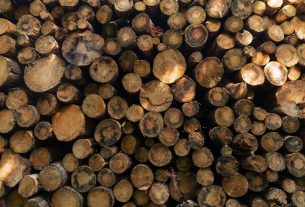The Netherlands – Wageningen University & Research and its collaborators have created a new form of aviation fuel made from bio-based agricultural waste streams.
One of the goals of the Renewable Energy Directive II (RED II) is to boost the usage of advanced biofuels in transportation to at least 3.5 percent of overall biofuel consumption in the EU. Advanced biofuels are fuels made from sustainable biomass that emit much less GHG (greenhouse gas) than fossil fuels. The new gasoline is made from an acetone-alcohol combination. While it does not yet match all of the requirements, it is near. The expectation is that it will meet all of the required conditions when some processing steps have been optimized.
Locally produced waste streams from agriculture or the food sector can be used as raw materials in the manufacturing of advanced biofuels if they meet strict sustainability criteria. The BioJet Fuel project is assessing the full value and production chains of biofuels derived from moist organic waste streams for use in the aviation industry (sustainable aviation fuel, or SAF). The project’s findings could be the first step in the development of new value chains in the Netherlands, in which biomass and waste streams with high moisture content from primary agriculture and the food industry are utilized as raw materials for bioprocesses for advanced liquid biofuels.
In this study, the raw materials used as a model are residual streams from potato processing. These streams were employed as a starting point for the fermentation of acetone, butanol, and ethanol (ABE fermentation). While the waste streams’ composition makes them suited for fermentation, they are currently used for low-value applications.
The mixture of ABE created from the substrate is catalytically transformed into hydrocarbons and, after hydrogenation and separation, into aviation fuel in this project’s technique. The whole production and value chains for the conversion of wet agricultural waste streams into fuel have been demonstrated to be technically possible through experimental study. A techno-economic assessment as well as a life cycle analysis (LCA) of the value chain were also performed.
This project’s feedstock is potato waste streams, which are currently sold as low-value cow feed or turned into methane via anaerobic digestion. A commercial process, on the other hand, will necessitate the addition of additional feedstocks in order to achieve sufficient volume. Lignocellulosic biomass and waste streams from the paper sector are two possible feedstocks that meet the criteria of Annex IX of the RED.




